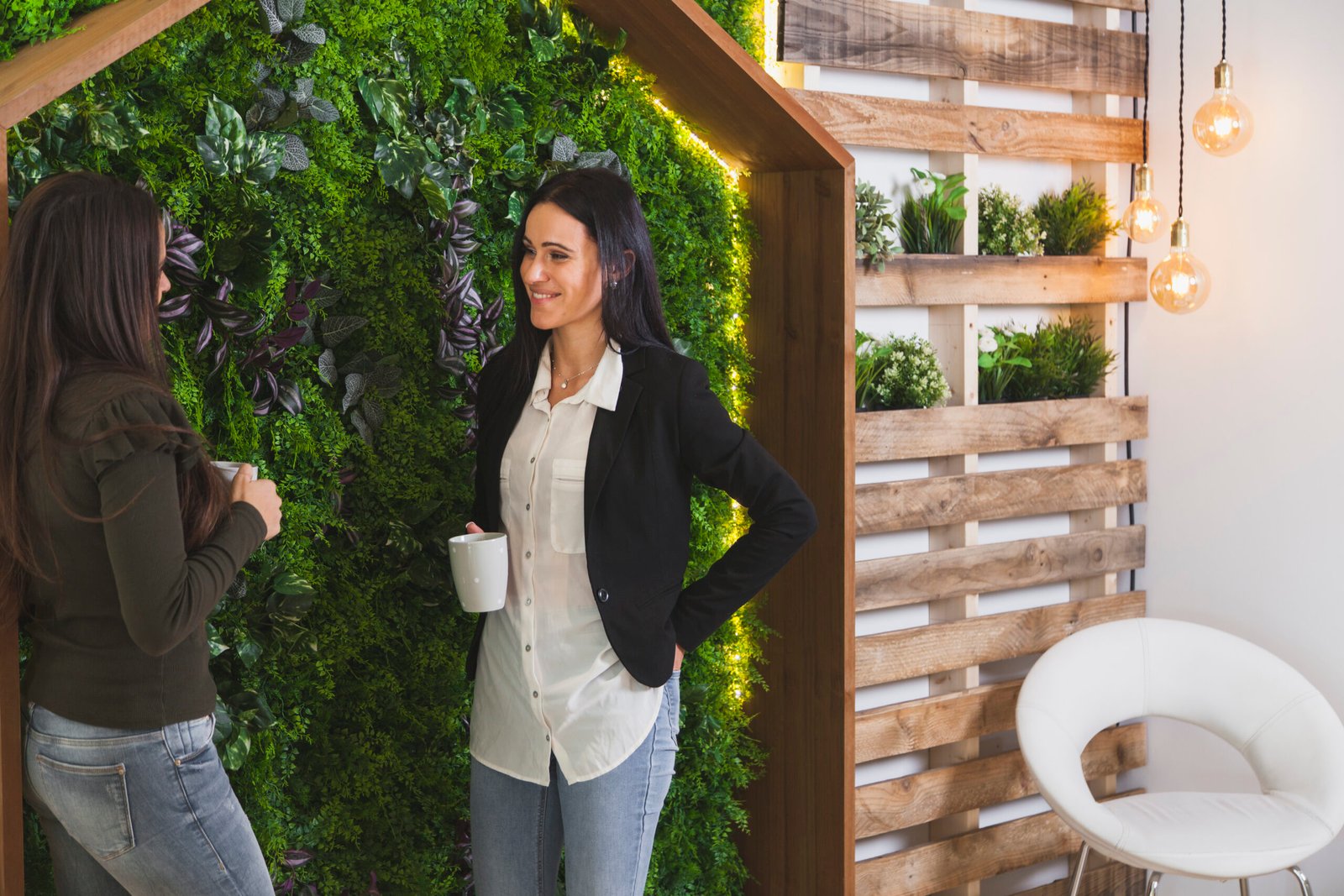Gardeners often face the challenge of determining the ideal space between trellis for different plants. Without the right spacing, plants may compete for light, air, and nutrients, leading to poor growth and reduced yields. If you’ve been wondering how much distance should be maintained between trellises, you’re not alone. The quick answer is that the ideal spacing largely depends on the type of plant, its growth habits, and your garden layout. For most vining plants, spacing between 6 to 12 inches works well, but the requirements vary depending on the plant species.
Now that you have an idea, let’s dive into the details and explore the factors that influence trellis spacing for different plants.
What is a Trellis, and Why is It Important for Plant Growth?
A trellis is a structure that allows climbing or vining plants to grow vertically by supporting them. In the making of these garden trellises out of wooden sticks, metal rods or wire mesh, the plants are given an opportunity to climb and spread quickly into the space provided, allowing for maximum use of the garden space. However, apart from space-saving wise. trellises also improve air circulation, and light exposure, as well as making harvesting easier.
That trellising is supposed to be done with a variety of vegetables and flowers like tomatoes, cucumbers, peas, and some flowers. Yet, it is important to mention the main secret underneath every successful gardening with trellises that is, correct spacing. In case the crisscrosses of the trellis are too close to each other, the plants would grow too dense and remain prone to diseases. On the other hand, if plants are positioned too far apart, they may not be able to maintain their structure and will be prone to weather damage because of little support.
Types of Trellises
Let’s go along and talk about the spacing considerations besides anything else. Let’s do a quick summary of the kinds of trellis for garden that are most often used in the garden.
- A-frame Trellis: Resembling an ‘A’ structure, it gives support from both sides.
- Flat Trellis: A straight, vertical structure that is often on a wall or fence.
- Arch Trellis: Used to create a tunnel-like place with plants on both sides.
- Fan Trellis: Used mostly to accessorize the gardens with flowers such as roses, it has a free-like look.
Apart from this, the different kinds of trellises have varied approaches to the maintenance of plant growth which are a result of the types of plants they use.
Key Factors to Consider for Trellis Spacing
While the ideal space between trellis can vary, several factors play an essential role in determining the right distance. Let’s take a closer look at each one:
1. Type of Plant
The type of plant you’re growing is one of the biggest factors in deciding trellis spacing. Vining plants like peas, beans, and cucumbers need plenty of space to spread their tendrils. On the other hand, bushy plants like tomatoes require more room to grow upward and outward.
Examples:
- Peas and Beans: These lightweight climbers need about 6 to 8 inches of space between trellises.
- Tomatoes: Indeterminate tomato varieties grow tall and wide, so spacing of 18 to 24 inches between trellises is recommended.
- Cucumbers and Melons: Larger vining plants like cucumbers need a wider spacing of 12 to 24 inches to allow for their sprawling nature.
2. Growth Habit of the Plant
Plants have different growth habits—some grow vertically with minimal lateral spread, while others tend to branch out in all directions. Plants that grow aggressively or produce large fruits require more space between trellises to accommodate their size.
Examples:
- Climbing Roses: These require significant space between trellises due to their bushy and thorny nature. A spacing of 24 to 36 inches ensures ample room for air circulation and sun exposure.
- Squash and Pumpkins: These plants produce large fruits and need ample space between trellises—spacing of 24 inches or more is advisable.
3. Air Circulation
Good air circulation is essential for healthy plant growth. It helps reduce the risk of fungal infections, such as powdery mildew and promotes faster drying of leaves after watering. When trellises are placed too close together, plants may become overcrowded, reducing air movement.
Tip: A general rule of thumb is to allow at least 12 inches between trellises to promote air circulation. For larger plants, increase this to 18-24 inches.
4. Sunlight Exposure
Plants need adequate sunlight for photosynthesis, the process through which they produce energy. If trellises are spaced too closely, the plants may block sunlight from reaching each other. This is especially important when planting in rows, as improper spacing can cast shadows on neighboring plants.
For sun-loving plants like tomatoes, cucumbers, and peas, ensure the trellises are spaced far enough apart to prevent shading. Typically, 12-24 inches between trellises works well in most cases.
5. Accessibility and Maintenance
Another consideration is accessibility. If your trellises are too close together, harvesting and maintaining the plants can be difficult. You’ll want to ensure there is enough room to walk between trellises for pruning, watering, and picking fruits or vegetables.
For practical purposes, it’s best to leave at least 24 inches of walking space between rows of trellises. This spacing will allow you to access the plants without damaging them.
6. Type of Trellis System
The kind of trellis you use can also impact how much space you need between structures. For example, an A-frame trellis requires more room than a flat trellis because it extends outward on both sides. Similarly, arch trellises and pergolas need extra spacing to allow for larger plants to grow over them.
Ideal Spacing for Popular Trellis Plants
1. Peas
Peas are climbers that are lightweight and need very little support, which makes them an ideal choice for smaller trellises. The gap between peas should be 6 to 8 inches so that the space is ideal for peas. You can get multiple trellises close together since peas don’t get overspread and oh have trellises to grow the plants. The plant can only be long without a very high possibility of overcrowding.
2. Beans
Beans are close to peas as they also need trellises near each other. Pole beans go straight up and do not spread much; thus, they only require 8 to 12 inches of space between the trellises.
3. Cucumbers
Cucumber is a big plant that grows long and sprawls, so that is why these need extra space of 12 to 24 inches between trellises. Cucumber trellises grow in all areas and thus the recommended distance between them is 12 to 24 inches so that the plants can grow without being entangled by other crops.
4. Tomatoes
Tomato plants come in two varieties: determinate (bushy) and indeterminate (vining). For indeterminate varieties, which grow tall and need substantial support, space trellises 18 to 24 inches apart. For determinate varieties, which are more compact, 12 to 18 inches of spacing will suffice.
5. Grapes
Grapes are vigorous climbers, that need to be nourished themselves without any contribution. The trellis for the vines should be adapted to form 4-6 feet of the distance thus the continued growth of vines comes from the healthy process of budding.
6. Squash and Melons
Squash and melons are fruits of great size whose respective vines must be attached to quality material for their support. For these, however, there has to be a minimum of 2 feet between the trellises in order to allow for their long nature and the fact that they produce large fruits.
Common Mistakes to Avoid When Spacing Trellises
Improperly spacing trellises can actually be the leading cause of plant growth inhibition. Here are some common mistakes and how to avoid them:
1. Placing Trellises Too Close
Overcrowding plants is what happens when trellises are placed too closely together which in return causes a reduction in air circulation and sunlight. Consequently, problems like mildew and fungal diseases arise. Be sure to spot your trellises at different intervals based on the plants you want to grow.
2. Inconsistent Spacing
Consistency is the key when it comes to spacing trellises. Uneven spacing is an example of growth inequality among plants. You need to keep regular interval between the trellises in order to ensure the beauty of your garden.
3. Ignoring Plant Growth Habits
Because plants have different growing habits, spacing of trellises can result in overcrowding or underutilization of space due to this. In this regard, the full growth potential needs to be considered for determining the spacing.
Final Verdict: Maximizing the Benefits of Trellis Spacing
Finding the right space between trellis for different plants can transform your garden, leading to healthier plants, better yields, and easier maintenance. By considering factors like plant type, growth habits, air circulation, and accessibility, you can create an ideal trellis system that supports your plants’ growth.
Remember to avoid common mistakes like overcrowding or inconsistent spacing, and always account for the full size of the plant when it’s mature. With proper planning and the right trellis spacing, your garden will thrive, and your plants will have all the room they need to grow tall and strong.







